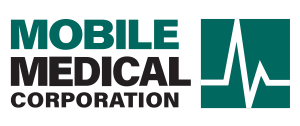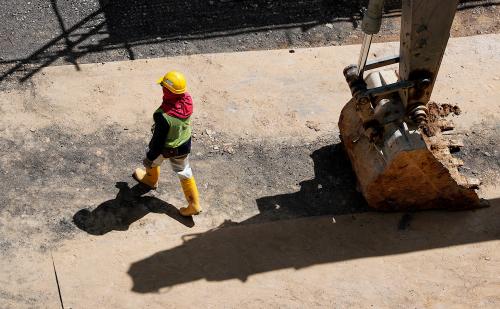Summer may bring to mind images of beaches and ice cream, but warmer weather doesn't mean that work stops. What it does mean is that, in addition to usual workplace hazards, your workers are also at risk of overheating.
The Dangers of Overheating
If you work outside during a hot summer (or if you're exposed to extreme heat during your work day), you run the risk of developing a heat-related illness. These illnesses go beyond sweating and discomfort: they can cause severe, painful symptoms, disabilities, and even death. Here are some heat-related illnesses to watch out for on the job:
Heat Rash
Heat rash is a rash caused by excessive sweating during hot, humid weather. It manifests as clusters of red pimples or small blisters, usually on the neck, upper chest, groin, under the breasts, or at the crease of the elbow.
Heat Cramps
Heat cramps are caused by low salt levels in the muscles due to excessive sweating. Symptoms include muscle cramps, muscle pain, and spasms in the limbs or abdomen.
Heat Syncope
Heat syncope is a condition that causes dizzy spells or loss of consciousness after standing too long or suddenly standing up. Symptoms include light-headedness, dizziness, and short fainting episodes.
Heat Exhaustion
Heat exhaustion occurs when the body loses excessive water and salt through sweating. Symptoms include headaches, nausea, dizziness, weakness, elevated body temperature, and thirst.
Heat Stroke
Heat stroke is one of the most serious heat-related illnesses, and can be fatal if not treated quickly. During a heat stroke,the body loses the ability to control its temperature; this means that in hot environments, internal temperature skyrockets within minutes. Symptoms of heat stroke include confusion, slurred speech, profuse sweating, seizures, and even loss of consciousness. Severe instances can cause permanent disability even if the victim survives, so it's important to guard against it.
Rhabdomyolysis
Rhabdomyolysis, often referred to as rhabdo, causes muscle tissue to rupture and die after a long period of heat stress and physical exertion. These dying muscle tissues release electrolytes and large proteins into the bloodstream. Symptoms include muscle cramps or pain, abnormally dark urine, irregular heart rhythms, weakness, seizures, and kidney damage.
Sunburn
While not necessarily heat-related, working outside in the summer puts you at risk of developing sunburn. Sunburn is skin damage sustained from prolonged UV (ultraviolet) ray exposure. Symptoms include redness, pain, swelling, and blisters on the skin, as well as fever, chills, weakness, or confusion. Severe or repeated sunburn can also cause premature skin aging and skin cancer.
Staying Safe While Working in the Summer
Now that you know the dangers of overheating, you understand the importance of protecting yourself while on the job. Here are a few tips for staying safe during summer:
Wear Sunscreen
Sunscreen is crucial to protect your skin from UV rays. If you're working outside, you should apply a sweatproof (or waterproof, depending on the environment) sunscreen to prevent sunburn. It should ideally be applied 30 minutes before going outside and be reapplied every two hours if you're sweating. While the SPF you use can vary depending on how easily you burn, it should be at least SPF 30.
Dress Appropriately
Although you may have to wear specific clothes as part of your job, you should still dress as appropriately as you can for summer weather. This doesn't necessarily mean leaving your skin bare; in fact, it can sometimes be safer to cover up for extra sun protection. Lighter-colored fabrics will help reflect the sun's rays, and a hat can protect your face and neck. If it's particularly bright out and you're able to do so, wear sunglasses to protect your eyes.
Stay Hydrated
Many heat-related illnesses are caused or exacerbated by dehydration. Keep a water bottle on hand and sip throughout the day to replenish lost moisture. Water is preferable, but juice or electrolyte-replenishing drink will work as well. Avoid dehydrating drinks, such as coffee.
Recognize Symptoms
Even with the precautions listed above, it's possible to develop a heat-related illness on the job. Be mindful of any weakness, dizziness, unusual pains, or other symptoms that indicate something's wrong. Recognizing and treating symptoms early can prevent a more serious reaction, disability, or even death.
How to Respond to a Heat Emergency
Sometimes, a heat-related illness develops into a fully fledged heat emergency. In the event that someone on your work site is experiencing a heat emergency, don't panic. Instead, follow these steps as the situation calls for them:
- Move them to a shaded area
- Remove unnecessary clothing, including socks and shoes
- Give them liquids, such as water or juice, and encourage them to sip frequently
- Apply cold compresses to the skin
- Soak the remaining clothes with cool water
- Place them in an ice bath if necessary
- Take them to an on-site first-aid clinic
- In extreme cases, call 911
It should be noted that, in case of a heat rash, you should not moisten the afflicted's skin unless they are experiencing a separate, more severe heat illness. If a heat rash is the only issue, it's better to keep the skin dry and apply a powder instead.
Beat the Heat with MMC
There's nothing more important on a job site than employee health and safety — not just in the summer, but year-round. That's why Mobile Medical Corporation brings its services to you. We offer a variety of on-site employee health services that'll guarantee your workers stay safe and healthy on the job. Don't wait for next summer — contact us and get started today.



